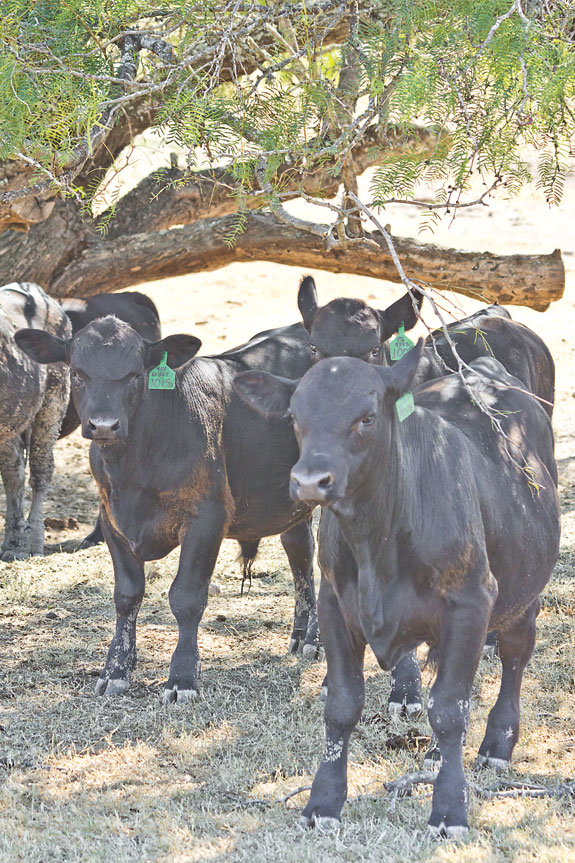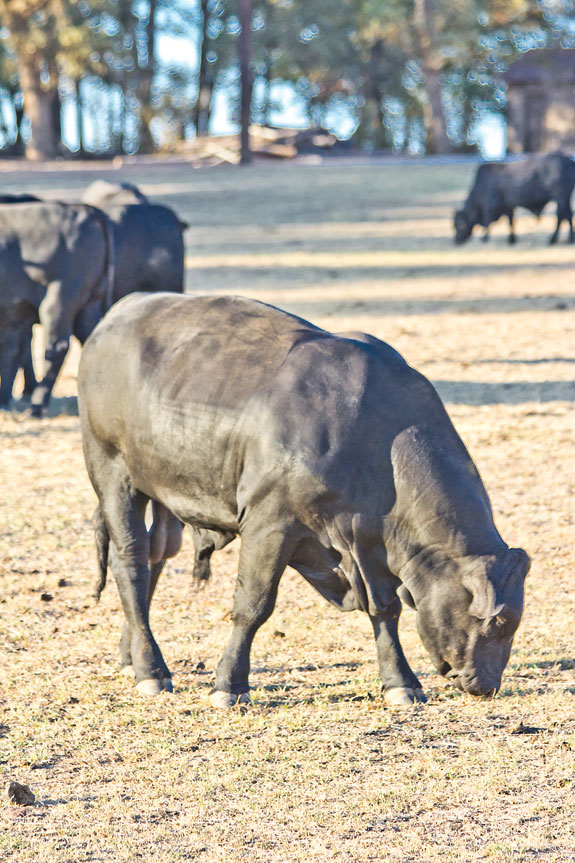Most of our attention in regards to management and nutritional factors affecting reproduction focuses on the cow herd or heifer side of the breeding herd.
While these are no doubt considerably important, in most operations much less attention is given to bulls.
When you consider what each bull is asked to do – successfully cover 15 to 40 females during the breeding season – the potential fertility impact of a given herd sire is exponentially greater than any given cow.

Manage goals for gain
A myriad of strategies can help develop young beef bulls. Young herd sire candidates are typically fed to gain somewhere between 2.25 to 4 pounds daily from weaning to 1 year old, depending on your goals.
As your goal for gain increases, the amount of feed needed for energy in the diet also increases. Depending upon feedstuffs available in your area, this probably means supplementing starch-based energy sources.
Bulls that are pushed to higher levels of gain must be monitored more closely than bulls developed more slowly.
Digestive upsets associated with poor management of higher-starch diets can lead to the formation of liver abscesses, poor foot health, poor rumen health and greater incidence of bloat.
All of these factors can ultimately lead to poor functionality and also reduce a bull’s productive life. The addition of an ionophore is recommended, as it can help reduce the risk of digestive upsets and aid in feed efficiency. Having said this, there is no substitute for good bunk management practices.
If ethanol byproducts are at your disposal, these make great additions to the diet. Removing some starch sources in the diet and replacing them with a higher fiber energy source such as corn gluten feed or distillers grain (which also brings fat) can help to alleviate some of the risk.
These feedstuffs also bring other useful nutrients to the diet such as protein and phosphorus.
Bulls should be managed so that they are at least 65 percent of their mature bodyweight at the beginning of their first breeding season.
Larry Corah, Certified Angus Beef vice president, recommends that breeds that reach puberty later in life (Limousin, Brahman, etc.) may need to be on a slightly higher plane of nutrition to expedite the onset of puberty.
Bulls that are on a high plane of nutrition should be allowed approximately 30 to 45 days on a lower plane of nutrition, targeting around 2 to 2.5 pounds of gain daily. This allows them time to become accustomed to dietary situations they will more likely encounter when breeding cows.
Body condition
One of the more common complaints in regards to herd sires is the state of their body condition. Whether it be overconditioned or underconditioned, body condition can have a negative impact on the usefulness of a given bull through the upcoming breeding season.
While bulls doing their jobs will no doubt lose condition as they are covering cows, an individual that is overconditioned at turnout could experience poor libido as well as reduced fertility.
Fat deposition in the scrotum can reduce thermoregulation, resulting in poor semen quality. Conversely, young sires that are underconditioned may have limited activity and lack the endurance to last an entire breeding season.
It’s my preference that yearling bulls enter the breeding season in a body condition score of 6 on a 9-point scale.
I liken their condition to that of an athlete. We want them looking toned and ready to go. Ideally, they should be given ample room to exercise during development and prior to turnout.
We wouldn’t expect a person to go out and run a mile if his only training was walking back and forth to the refrigerator.
Adequate shelter and bedding should be provided, depending on environmental conditions. Frostbitten testicles during winter storms can have a severe impact on fertility.
Develop yearling bulls away from more mature bulls. Failing to do so can result in injury and animals not getting the nutrients they need due to more senior individuals expressing their dominance in the group setting and at the feedbunk.
Avenues for developing bulls can occur at the ranch level, in a central bull test or a commercial facility. Any of these means can provide you with a good herd sire, depending on your resources and goals.
If you elect to have your bulls raised off-site, be sure and do your homework. Many operations have a history of feeding and developing bulls. Choose one that is reputable and can satisfy your goals.

Protecting bull health
A sound vaccination program is also a must. IBR, PI3, BVD, haemophilus somnus, leptospirosis, vibriosis and a seven-way clostridial should provide good protection.
If the bull has not been immunized before, a booster at three weeks is warranted. Depending on location, other immunizations may be needed.
Work with your veterinarian to determine the needs on your particular operation. Internal and external parasite control is also crucial.
Deworming and pouring your bulls will ensure they reach their desired growth rate. Once again, depending on location, other measures for parasite control may be needed.
A breeding soundness exam (BSE) is absolutely crucial prior to turning out your yearling bulls with females. A complete BSE includes a scrotal circumference measurement, a semen exam and a physical exam.
Breeding soundness exam research has reported that bulls with scores greater than 71 have a dramatically higher conception rate than those scoring below 70 points.
When compared to the cost of using a sterile or substandard bull, the money invested in a BSE is well spent. Research indicates that bulls with larger scrotal circumferences are more fertile and tend to be more sexually mature. Generally, bulls should have scrotal circumferences of 32 cm at 1 year old.
Yearling bulls should run with approximately 15 to 25 cows per head. Factors such as physical size, age, terrain, climate and size of pasture all can affect the ideal ratio.
After turnout, bulls need to be monitored for physical soundness. If, visually, the bull does not seem to be detecting heat or breeding cows, or if he shows signs of lameness or faster-than-anticipated reduction in body condition, replace the bull and give him a rest.
Bull development is one of the most integral parts of a successful cow-calf operation. Attention to detail and administering sound nutrition and management can allow young sires to develop properly and effectively add value to your herd. Work with your consultant and veterinarian to develop a sound, complete program for your enterprise. ![]()
PHOTOS
TOP: Before their first breeding season, yearling bulls need sufficient time to build body condition and endurance.
BOTTOM: More mature bulls should be separated from your yearlings since they like to express their dominance at the feedbunk.







